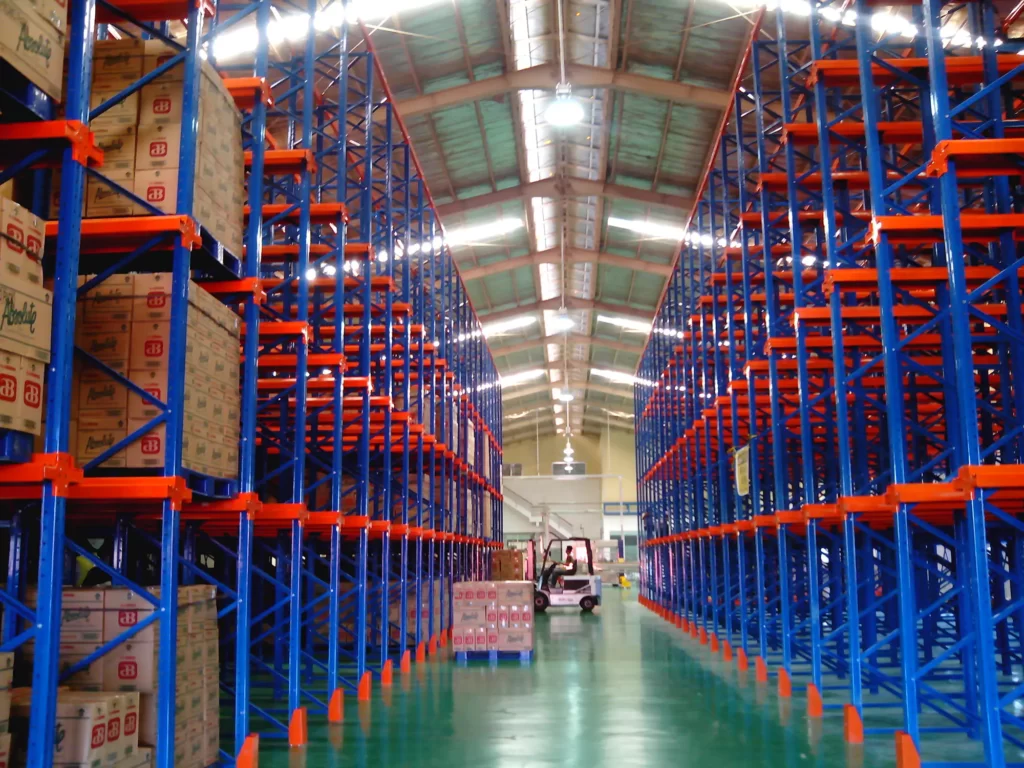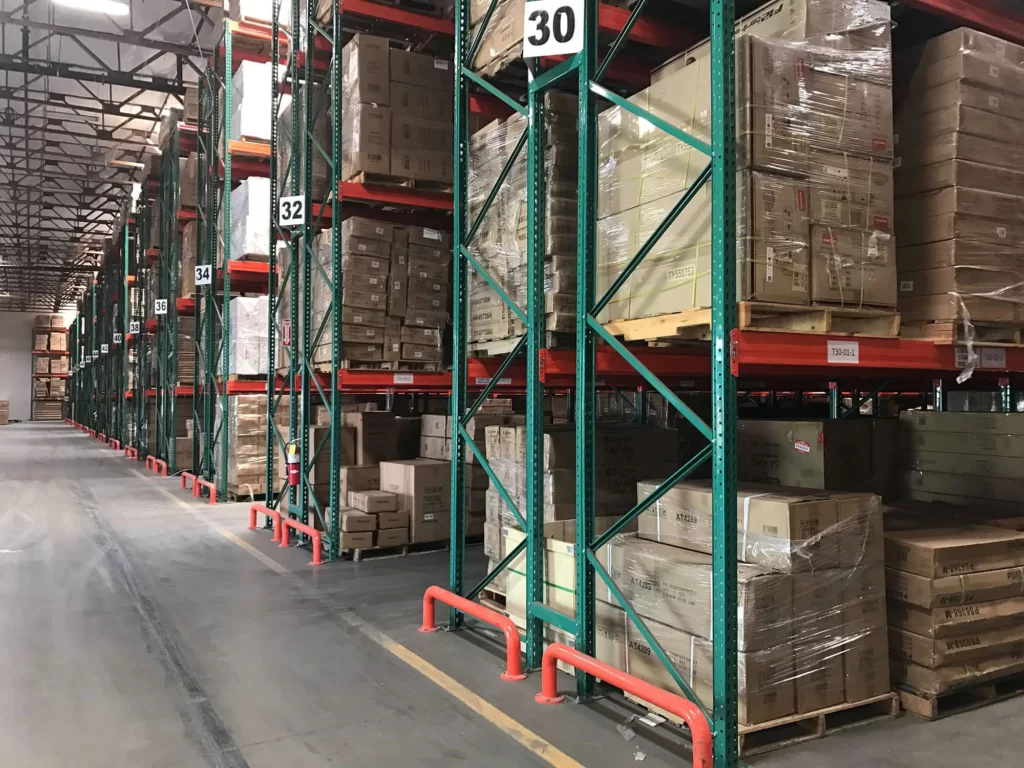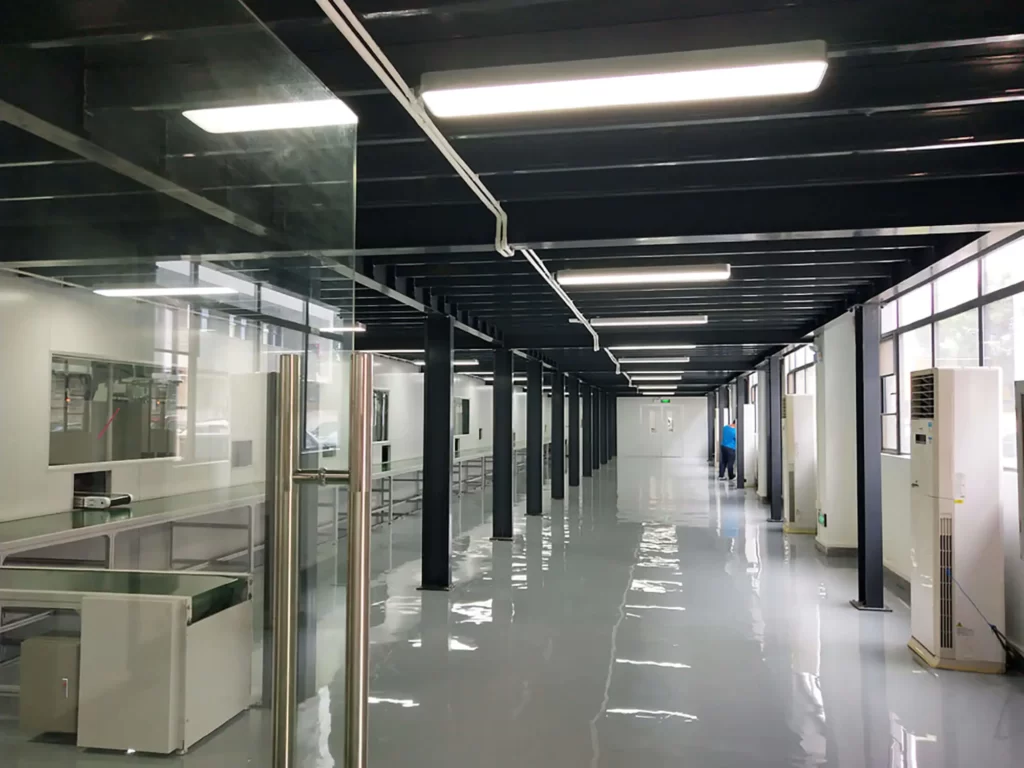Industrial warehousing, in simple words, is the storage and distribution of goods in a commercial or industrial setting. Materials and goods are typically stored and managed in large warehouses, storage centers, or distribution centers.
The ability to efficiently store, handle, and transport items has made industrial warehousing an integral part of global supply chain management. Demand for industrial warehousing has skyrocketed in recent years thanks to the growth of e-commerce and internationalization.
This article will cover the fundamentals of industrial warehousing, including its various forms, technologies employed, best practices, problems, and emerging trends. Let us dig in and explore the fascinating field of industrial storage facilities.
Industrial Warehousing Defined.
Space for diverse industrial activities, from manufacturing to keeping finished items, is provided by industrial warehousing, making it an integral part of the modern economy. Administrative buildings, manufacturing sections, storage areas, loading and unloading platforms, sales and display areas, parking lots, perimeter zones, and waste collection and treatment facilities are just a few of the many features that make up these massive warehouses. Many parts of a company’s ecosystem rely on them, including the loading machinery, production machinery, commodities, equipment, and vehicles.
Industrial warehouses have the infrastructure necessary for manufacturing, processing, assembly, stockpiling, and distributing goods. Prefabricated buildings consisting of metal, reinforced concrete, or a combination of the two can be used to create these warehouses. The structural dimensions of the structure are established by the industry’s special requirements, and they are designed for rapid and inexpensive construction.
How Is an Industrial Warehouse Compared With Other Warehouses?
There are important distinctions to be made between industrial warehouses and other storage facilities. When compared to an industrial warehouse, whose primary role is not storage but rather the housing of a complete enterprise, a logistics center’s primary function is distribution. Hence, industrial warehouses are more versatile and often greater in size than logistics hubs.
The distribution, storage, and delivery of industrial commodities are important functions of both logistics centers and industrial warehouses. Logistics hubs are indeed a common complement to traditional industrial warehouses, helping to strengthen the warehouse’s network and distribution channels and allowing goods to reach more distant markets. This is crucial for companies who want to increase their reach and impact.
Metal, concrete, or a combination of the two can be used in the construction of both logistics centers and industrial warehouses. Also, the circulation efficiency of the facility might be impacted by the huge volumes of machinery and people that are common in both types of warehouses. Because of its impact on foot traffic and long-term wear, warehouse flooring is an essential design element. One easy option to improve the floor’s condition and save maintenance and repair costs is to use chemical treatments that increase its hardness and resistance.
Industrial Warehousing Operations Explained.
The first step in industrial warehousing operations is the receipt of goods. This involves inspecting and verifying the incoming products against purchase orders to ensure accuracy and quality. Once the goods have been received and verified, they are typically labeled and assigned a storage location within the warehouse.
Assembly or disassembly of parts, production or processing of raw materials, and quality control inspections of final goods are all examples of possible production activities carried out in industrial warehouses. These operations could be carried out either manually or with the help of automated systems and could necessitate the use of specialist equipment or apparatus.
Just-in-time (JIT) manufacturing is a production method that can be used in industrial warehouses to cut down on waste and boost productivity by making items as they are needed. The warehouse and the supply chain must work closely together to achieve JIT manufacturing, as products must be delivered to the warehouse at the exact moment they are needed for production.
Storage is the next process in industrial warehousing. Depending on their size, weight, and other factors, products are placed in specific sections of the warehouse. To lessen the possibility of physical harm, heavier objects may be kept on lower shelves or stored closer to the ground. To the same end, dangerous goods can be kept in their own designated storage rooms in the warehouse.
Products may undergo additional processing after being stored, including sorting, packaging, and labeling. Depending on the product and state of the art, these tasks may be performed manually or by automated technologies—in automated warehouses, all processes are automated.
Inventory management is an essential part of every industrial warehouse. Part of this responsibility is keeping detailed records of how things are moved across the warehouse. Effective inventory management is crucial for keeping products on hand and making the most of available warehouse space.
Distribution to retailers and other warehouses is the final step in industrial warehousing. Product selection, packing, loading onto trucks or other vehicles, and timely, damage-free delivery to the intended recipient may all fall under this category.
Technologies Used in Industrial Warehouses.
Industrial warehousing has benefited immensely from technological developments, which have increased productivity, precision, and security. Common technologies used in industrial warehouses include:
- Warehouse Management Systems (WMS) is a type of software that helps keep track of stock, organize orders, and get them ready for shipment. Enterprise Resource Planning (ERP) software is only one example of a system that can communicate with it to provide up-to-date information on stock and orders.
- AS/RS stands for automated storage and retrieval systems, and it describes a class of robots built for this purpose. These methods help storage systems out since they boost capacity per unit of space.
- The Internet of Things (IoT) is a vast system of linked electronic gadgets and computers. Managing inventory, maintaining machinery, and cutting down on waste are just some of the many ways the Internet of Things can be put to use in industrial storage facilities.
- Robots are being used more frequently in industrial facilities to carry out monotonous tasks like picking and packaging. Using AMRs to move goods around the warehouse rather than workers is one way to increase output while decreasing expenses.
- Warehouse workers may benefit from AR technology by receiving visual cues and directions as to where to pick up and store goods. This could improve accuracy and decrease processing times for orders.
- Drones can be utilized in warehouses for inventory management, stocktaking, and surveillance. These robots can collect data on inventory levels and potential threats with remarkable speed and precision.
Best Practices in Industrial Warehousing.
Best practices must be adhered to if an industrial warehouse is to function at peak efficiency. Best practices for industrial warehouses include the following:
- The layout of a factory warehouse needs to be optimized for the best productivity. This can involve maximizing the utilization of vertical space, making sure all parts of the warehouse are easily accessible, and decreasing the amount of time spent walking between storage and loading docks.
- The success of every industrial warehouse hinges on the accuracy and timeliness of its inventory management system. The danger of stockouts and overstocking can both be mitigated by using an effective inventory management system.
- Well-trained workers are crucial to the success of any warehouse. Staff members need instruction in the proper operation of machinery, adherence to safety regulations, and efficient stock management.
- To avoid malfunctions and guarantee peak performance, it is crucial to undertake routine maintenance on your equipment. Maintenance entails checking, cleaning, and fixing anything regularly.
- Product conformity to specifications can be ensured through the use of quality control procedures. Product testing, quality assurance, and the monitoring of defects fall under this category.
- Because of the potential dangers present in industrial warehouses, it is crucial to take precautions to ensure the safety of workers and customers. Personal protective equipment (PPE), warning signs, and consistent safety education are all part of this.
- Sustainable procedures should be implemented because industrial warehousing can have a major influence on the environment. Reducing energy use, recycling, and eco-friendly packaging are all examples.
Industrial Warehousing Challenges.
Many obstacles threaten the smooth functioning and productiveness of industrial warehousing. Some of the most typical difficulties in industrial warehousing are as follows:
- Skilled worker availability is low, and the warehousing job market is extremely competitive. Because of this, it may become more challenging to attract and keep qualified workers, which in turn may reduce output and efficiency.
- Precise inventory management is essential in industrial warehousing, but it can be difficult because of the massive quantities of stock and the frequent changes required. Stockouts, excess inventory, and supply chain inefficiencies are all possible outcomes of inaccurate inventory management.
- Natural catastrophes, political unrest, and worldwide pandemics are just some of the events that can cause disruptions in the supply chain, which includes industrial warehousing. Delays, higher prices, and ineffectiveness in the supply chain are all possible outcomes of such interruptions.
- As areas like automation, robots, and AI emerge, the industrial warehousing sector must adapt quickly to remain competitive. It takes time, money, and training to properly deploy new technologies, and it is not always easy.
- The environmental impact of industrial warehousing is being addressed with increasing urgency. Energy savings, water conservation, and greenhouse gas reductions are all part of this plan.
- Safety, environmental effect, and fair labor practices are just some of the areas where industrial warehousing must adhere to various norms and requirements. Failure to comply might result in monetary penalties and irreparable harm to an organization’s standing.
- Industrial warehousing operations necessitate large quantities of space, and it can be difficult to locate appropriate spaces. Space restrictions can also be caused by the repurposing of former industrial areas due to increasing urbanization and shifting patterns of land use.
Industrial Warehousing Trends.
Many new trends have evolved in industrial storage in recent years as a result of shifting consumer preferences, new technologies, and competitive pressures. Some current tendencies in industrial warehouses are as follows:
- E-commerce and omnichannel distribution: As e-commerce has grown in popularity, there has been a move towards omnichannel distribution. This entails meeting customers’ needs by delivering their purchases via a variety of different channels. To keep up with the growing need for timely shipment and precise order fulfillment, warehouses must now be run more quickly, flexibly, and efficiently.
- The efficiency of manufacturing warehouses has been significantly boosted by robotics and automation. Automated storage and retrieval systems (ASRS), robots, and autonomous guided vehicles are becoming increasingly popular as a means through which organizations can boost output while cutting costs and boosting worker safety (AGVs). This trend is likely to continue as more companies see the need to streamline their supply networks.
- Sustainability and green storage facilities are becoming increasingly popular as corporations look for ways to reduce their negative effects on the environment. Part of this shift is toward using renewable energy sources, recyclable materials, and transportation options that reduce the environmental effect.
- Industrial warehouses are one of the fastest-growing application areas for data analytics and the Internet of Things (IoT). Companies can now make data-driven decisions and fine-tune their operations thanks to these technologies’ ability to monitor inventory levels, order fulfillment, and equipment maintenance in real-time.
- Outsourcing and partnerships: To optimize their supply chain operations, more and more businesses are turning to third-party logistics providers (3PLs) and strategic alliances. The requirement for increased adaptability to shifting market conditions is driving this development.
The growth of e-commerce and the need for speedier delivery have fueled an expansion of last-mile delivery and urban warehousing. These distribution centers are often located in densely populated areas, close to clients, and are equipped to handle smaller, more frequent shipments.
Conclusion
Manufacturing, processing, assembling, stockpiling, and distribution all require storage space, which is provided by industrial warehouses. Demand for industrial warehousing has expanded with the development of e-commerce and globalization. Compared to logistics facilities, which focus largely on distribution, industrial warehouses are typically larger and more flexible. Goods are received, then manufactured, stored, inventoried, and distributed as part of an industrial warehouse’s daily operations. Warehouse Management Systems, automated storage and retrieval systems, the Internet of Things, and robotics are just a few examples of the technologies that have improved industrial warehousing. In sum, industrial storage is extremely important to today’s economy, and its significance will only grow in the years to come.








